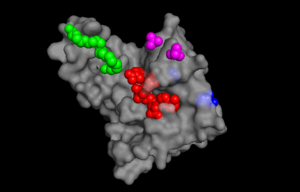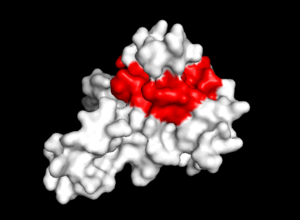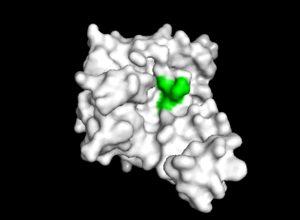User:Brittany Allen/Sandbox 1
From Proteopedia
| Line 28: | Line 28: | ||
== References == | == References == | ||
| - | < | + | <references/> |
Revision as of 02:39, 4 December 2017
|
Contents |
General Background Information
TIP30, also known as both CC3[1]. and HTATIP[2] is a tat-interacting protein that functions as a tumor suppressor involved in cell growth, apoptosis, metastasis, DNA repair, metabolism and angiogenesis of tumor cells[3]. TIP30 acts as a transcription cofactor that can regulate gene expression[4] and has both pro-apoptotic and anti-metastatic properties[5]. When the promoter of TIP30 is methylated, TIP30 becomes downregulated and associated with tumor prognosis[6]. It is thought that the tumor suppressor effect is the result of the inhibition of nuclear transport through binding with importin βs or by regulating transcription through interaction as a complex with a co-activator independent of AF-2 function and the c-myc gene[7]. Several studies have found that TIP30 may be linked to esophageal carcinoma, laryngeal carcinoma, glioma, pancreatic ductal adenocarcinoma, breast cancer, gastric cancer, gallbladder adenocarcinoma, lung cancer, and hepatocellular carcinoma[8].
Structure
TIP30 is an evolutionary conserved gene located on human chromosome 11[9] . TIP30 has a molecular mass of 30 kd[10] and is composed of 242 amino acids[11]. TIP30 is composed of alpha helices, beta sheets, and loops (Movie). Through sequence analysis studies, it is thought that TIP30 may be a member of the SDR (substrate determining residue) family which contain a characteristic motif at their catalytic start sites[12]. The carboxyl terminus of TIP30 binds to the SDR substrate, while the amino terminus of TIP30 is the nucleotide cofactor-binding domain which has a characteristic Gly-X-X-Gly- X-X-Gly motif (where X can be any amino acid)[13]. Since SDR families have binding specificity for NADPH[14] and TIP30 contains a dehydrogenase reductase fold that contains binding specificity for NADPH[15]., the binding of NADPH may be important for the biological activity of TIP30 including interactions with importins as well as the c-myc system[16].
TIP30 is known to bind 4 ligands: NDP (NADPH Dihydro-nicotinamide-adenine-dinucleotide-phosphate), PE8 (3,6,9,12,15,18,21 heptatricosane-1,2,3-diol), GOL (glycerol), and SO4 (sulfate ion)[17]. The location these residues bind can be seen in ________. According to uniprot, TIP30 contains a nucleotide binding region between residues 19-52, as shown in ________, and a binding site at residue 131, as shown in______. When comparing _____ and ________, it can be observed that the ligands bind in the active regions and interact with the residues. Uniprot also noted that TIP30 can contain a mutagenic site at positions 28-31 (______), if this site is present there is a loss of proapoptotic and metastasis-inhibiting effects.



